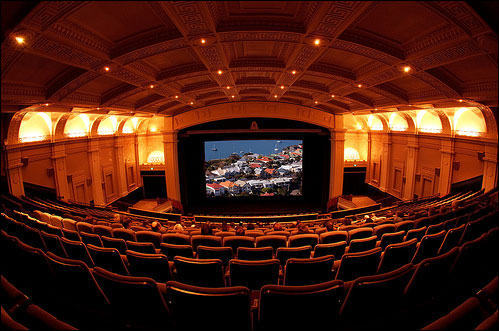In both the "Assassin’s Creed" games you play as Desmond, in the year 2012. Your character has been captured by modern day Templers (the Abstergo company) The Templers force you to go into a machine which is called an Animus, which enables you to relive your ancestors lives. In "Assassin’s Creed 1" you re-live the life of Altire, a 14th century assassin. In "Assassin’s Creed 2" you re-live the life of Ezio Auditore Da Firenze a late 15th century banker’s son who becomes an assassin.
Gradually through both games you find out that The Knights Templers want to take over the world and throughout history, they have been fighting a secret war against the Assassins (a secret organisation who fight for freedom). The Templers (being the more powerful force) re-wrote history in the way they wanted it to be written and not all historical events as we know it were correct.
The fact you play as a character that is playing (re-living) another character, taking on the persona and learning skills from them gives more weight to the immersion than other digital games, it’s innovative in its creation and is really exploring the exclusive immersive potential that digital games can offer. Other media like the films Avatar, Gamer and Being John Malkovich all are about a character taking over or becoming another character in some way.
Using the character within a character format cleverly overcomes a common obstacle in many other digital games, with the heads up display (showing the inventory or ammunition on the screen) this can be a part of digital games that detract from the immersion between the player and character, but in the Assasin’s Creed series, all the high-tech heads up display is just the visual styling of the Animus that Desmond is in. Also the health bar (a highly unrealistic creation,) is actually the synchronisation between Desmond and the Animus.
The Assasin’s Creed games can be compared to Dan brown books (mostly The Da Vinci code) in many different ways. Assasin’s Creed 2 has the historical character of Leonardo Da Vinci, who helps Ezio Auditore make stealth weapons, decipher codes and fly in the legendary flying machine designed by Da Vinci. Where as in the novel “The Da Vinci Code” the reader finds out that Da Vinci left secret messages in his art work (that are deciphered by the character of Robert Langdon) about The Holy Grail (Mary Magdalene).

Templers appear in the da vinci code as well as Assasin’s Creed 1 and 2; their role in both media is quite similar in that they are not what they appear to be. The Knights Templers are renowned in history for being an elite fighting force formed for the holy crusade, where as in The Da Vinci code, they also are sworn to protect the secrets surrounding Jesus Christ and Mary Magdalene, killing anyone who would reveal the secrets. In Assasin’s Creed 1 and 2, the Templers are looking for “a piece of Eden” which is an alien device with massive amounts of technology and power that they would use to control the world. The Assassins’ job is to make sure the Templers do not find any pieces of Eden.
The theme of both digital game and Dan Brown novels can be compared. Dan Brown usually writes detective, mystery, conspiracy thrillers which also include riddles and word/number puzzles. The Narrative in Assasin’s Creed 2 takes the player on a thrilling journey as they find out about their families secret lives as assassins’. Assasin’s Creed 2 also contains puzzles in the form of “Glyphs”, which are glowing symbols on historical buildings throughout the game, once viewed by the player the “Glyph” becomes a puzzle. Once all the puzzles are solved, there is a cut scene showing a startling narrative twist. In the same way that Robert Langdon has to solve puzzles in the Da Vinci Code and Angles and Demons to further the narrative.

As the games developers for the Assasin’s Creed serise used real world events and a vast number of historical references, there is a good chance of beyond the objective participation. There is bound to be something that the player had a previous interest in before playing the game. I for one found all the historical references interesting, especially how the developers put their own spin on how things happened. The same can be said for Dan Brown’s novels. Using historical events and characters within narrative have proven to be a popular format, with the Da Vinci code being one of the most popular novels of the decade. Assasin’s Creed 2 is also very popular, getting a 9 out of 10 rating from the official Xbox 360 magazine. Does this mean that the comparisons I have made between the two media are a key for popularity? Do the general public crave the real world and historical events being manipulated and contrived in a narrative format? Or is it just something new and fresh that will no doubt be saturated with similar formats and stories across the whole media plane? There have already been two film adaptations of the Dan Brown books The Da Vinci Code and Angels and Demons which would suggest this may already be happening.



No comments:
Post a Comment